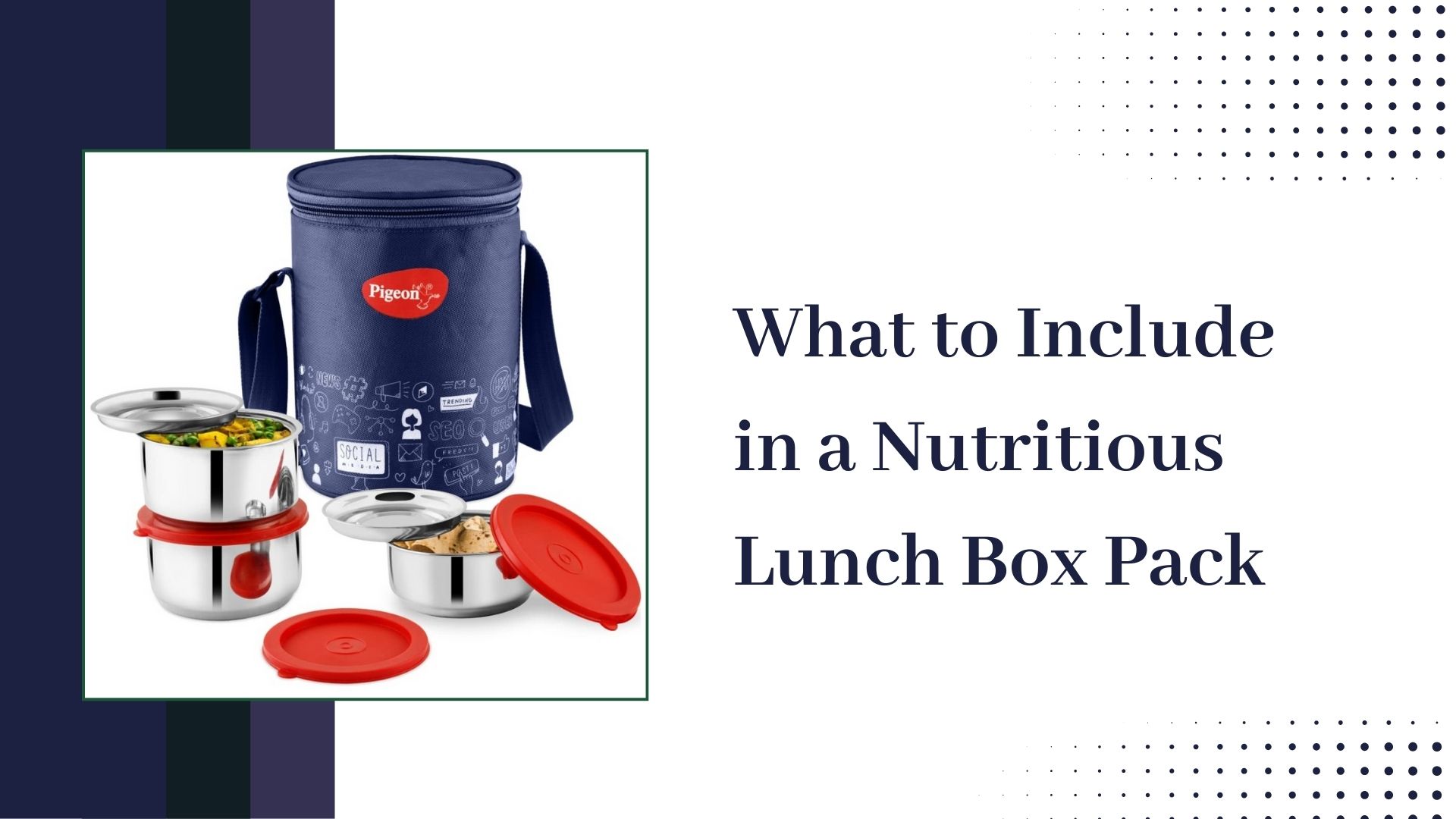Making a healthy lunchbox for yourself or a loved one can seem like a difficult undertaking at times. Finding the ideal blend of wholesome, delectable, and simple-to-prepare foods is crucial because there are so many options and nutritional considerations. In this blog, we’ll examine the essential elements of a wholesome lunchbox and provide some advice on how to prepare lunch effortlessly.
Table of Contents
ToggleWhy a Nutritious Lunch Box is Important
A nutritious Lunch Box Pack is vital for maintaining energy levels and concentration throughout the day. Whether you’re packing lunch for school, work, or a day out, having a well-balanced meal can help you stay focused and productive. Additionally, a healthy lunch box can prevent the afternoon slump and reduce the temptation to reach for unhealthy snacks.
Components of a Nutritious Lunch Box
1. Proteins
Proteins are the building blocks of our bodies. They help repair tissues, build muscle, and provide long-lasting energy. Including a good source of protein in your lunch box is crucial for staying full and satisfied. Some great protein options include:
Animal Proteins
- Chicken: Grilled, baked, or roasted chicken breast slices.
- Turkey: Lean turkey slices or turkey meatballs.
- Fish: Tuna, salmon, or other grilled fish fillets.
- Eggs: Hard-boiled eggs or egg salad.
Plant-Based Proteins
- Beans and Legumes: Chickpeas, lentils, or black beans.
- Tofu: Marinated or baked tofu cubes.
- Nuts and Seeds: Almonds, walnuts, sunflower seeds, or pumpkin seeds.
- Plant-Based Meat: Vegetarian sausages or burgers.
2. Carbohydrates
Carbohydrates provide the body with quick energy. However, it’s essential to choose the right kind of carbs. Opt for whole grains and complex carbohydrates that release energy slowly, keeping you full for longer. Some healthy carbohydrate choices are:
- Whole Grain Bread: Sandwiches made with whole grain or multigrain bread.
- Brown Rice: A small portion of brown rice or quinoa.
- Whole Wheat Pasta: Pasta salads with lots of vegetables.
- Sweet Potatoes: Baked or roasted sweet potato wedges.
3. Fruits
Fruits are a natural source of vitamins, minerals, and fiber. Including a variety of fruits in your lunch box can make your meal more enjoyable and nutritious. Here are some fruit options:
- Berries: Strawberries, blueberries, raspberries, or blackberries.
- Citrus Fruits: Oranges, mandarins, or grapefruit.
- Apples and Pears: Sliced apples or pears.
- Grapes: Seedless grapes, easy to eat and pack.
4. Vegetables
Vegetables are packed with essential nutrients and fiber. They add color, texture, and crunch to your lunch box. Here are some ways to incorporate vegetables:
- Raw Veggies: Carrot sticks, cucumber slices, cherry tomatoes, or bell pepper strips.
- Salads: Mixed greens, spinach, or kale with a light dressing.
- Cooked Veggies: Steamed broccoli, roasted Brussels sprouts, or grilled zucchini.
5. Dairy or Dairy Alternatives
Dairy products are a great source of calcium, vitamin D, and protein. If you are lactose intolerant or follow a vegan diet, there are plenty of dairy alternatives available. Some options include:
- Cheese: Cheese slices, cheese sticks, or cottage cheese.
- Yogurt: Greek yogurt or plant-based yogurt.
- Milk: A small container of milk or plant-based milk.
6. Healthy Fats
Healthy fats are essential for brain health and overall well-being. They also help keep you full and satisfied. Some healthy fat options are:
- Avocado: Sliced avocado or guacamole.
- Nuts and Seeds: Almonds, chia seeds, flaxseeds, or pumpkin seeds.
- Olives: Green or black olives.
- Nut Butters: Peanut butter, almond butter, or sunflower seed butter.
7. Hydration
Staying hydrated is just as important as eating a nutritious meal. Make sure to include a drink in your lunch box. Some healthy drink options are:
- Water: The best choice for hydration.
- Herbal Tea: Iced or hot herbal teas.
- Infused Water: Water with slices of cucumber, lemon, or berries.
- Coconut Water: A natural electrolyte drink.
Tips for Packing a Nutritious Lunch Box
1. Plan Ahead
Planning your meals ahead of time can save you a lot of stress and ensure that you have all the necessary ingredients. Consider making a weekly menu and preparing some items in advance, such as chopping vegetables or cooking grains.
2. Balance Your Meals
Aim to include a balance of proteins, carbohydrates, fruits, vegetables, dairy or dairy alternatives, and healthy fats in each lunch box. This ensures that you get a variety of nutrients and stay full throughout the day.
3. Keep It Simple
You don’t have to make elaborate meals every day. Simple, wholesome foods can be just as nutritious and delicious. Focus on fresh ingredients and easy-to-prepare items.
4. Use Quality Containers
Invest in good-quality lunch boxes and containers that are easy to clean and keep food fresh. Look for containers with compartments to keep different food items separate.
5. Add Variety
Avoid getting bored by varying the contents of your lunch box. Try different combinations of proteins, carbs, fruits, and vegetables. Experiment with new recipes and flavors to keep things interesting.
6. Involve Your Kids
If you’re packing lunch for children, involve them in the process. Let them choose some of the items for their lunch box. This can make them more excited about eating their meals and trying new foods.
7. Keep Safety in Mind
Make sure that perishable items are kept cool until lunchtime. Use ice packs or insulated lunch boxes to maintain the proper temperature and prevent food spoilage.

Sample Lunch Box Ideas
For Adults
Mediterranean Lunch Box
- Grilled chicken breast slices
- Quinoa salad with cherry tomatoes, cucumber, and olives
- Sliced bell peppers and carrots
- Hummus for dipping
- Fresh berries
- Water with lemon slices
Vegetarian Lunch Box
- Chickpea salad with spinach, cherry tomatoes, and feta cheese
- Whole grain pita bread
- Sliced apples
- Almonds and walnuts
- Greek yogurt with honey
For Kids
Fun and Colorful Lunch Box
- Turkey and cheese roll-ups
- Whole grain crackers
- Baby carrots and cucumber slices
- Apple slices with peanut butter
- A small container of milk
Plant-Based Kids Lunch Box
- Peanut butter and banana sandwich on whole grain bread
- Cherry tomatoes and baby carrots
- Grapes
- A small container of plant-based yogurt
- Water with cucumber slices
Conclusion
Packing a nutritious lunch box doesn’t have to be complicated. By including a variety of proteins, carbohydrates, fruits, vegetables, dairy or dairy alternatives, and healthy fats, you can create balanced and satisfying meals. Remember to plan ahead, keep it simple, and add variety to keep things interesting. With these tips and ideas, you’ll be able to pack delicious and nutritious lunches that you and your family will enjoy.
Ensuring that you or your loved ones have a nutritious lunch box is a great way to promote healthy eating habits and maintain energy throughout the day. Happy packing!
For more insightful articles related to this topic, feel free to visit relxnn









